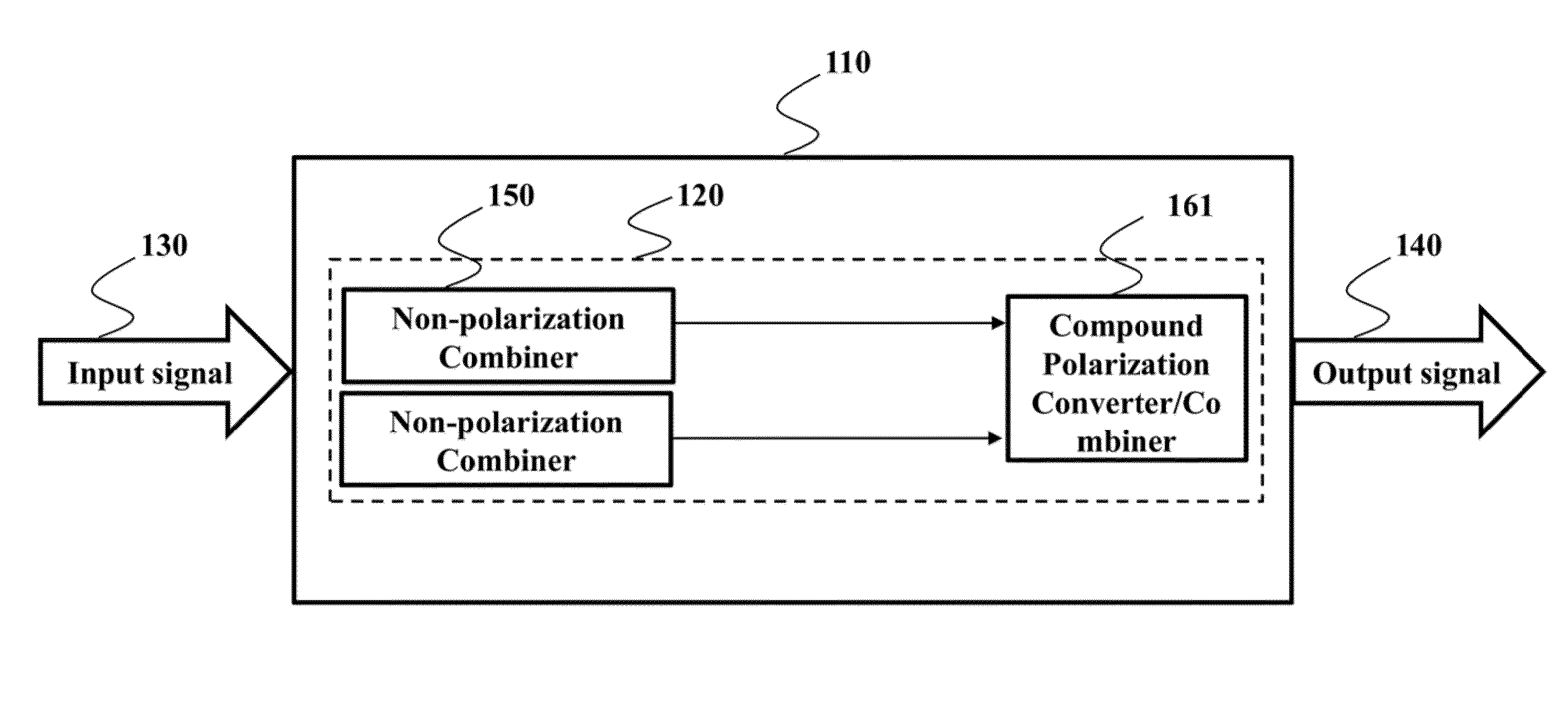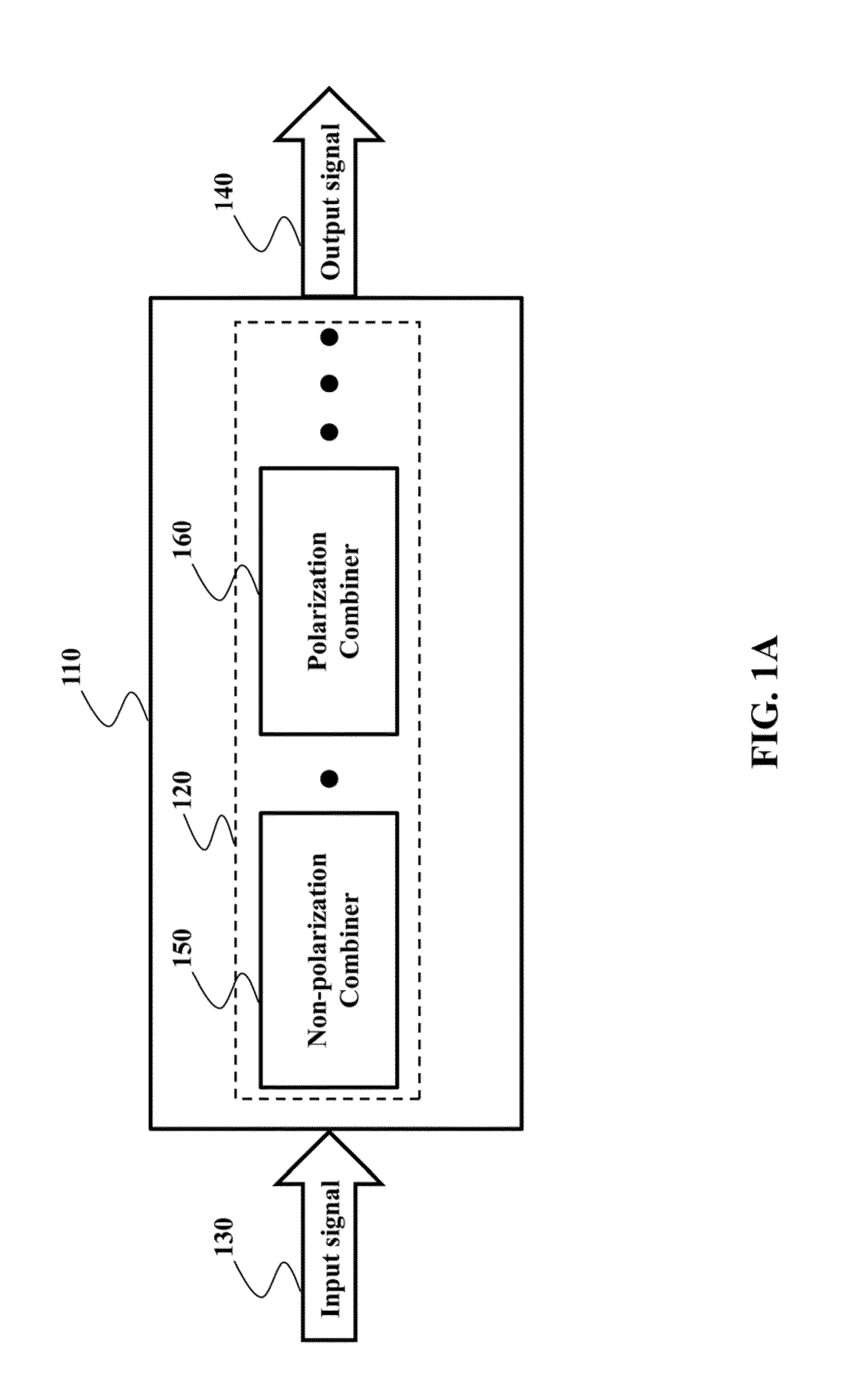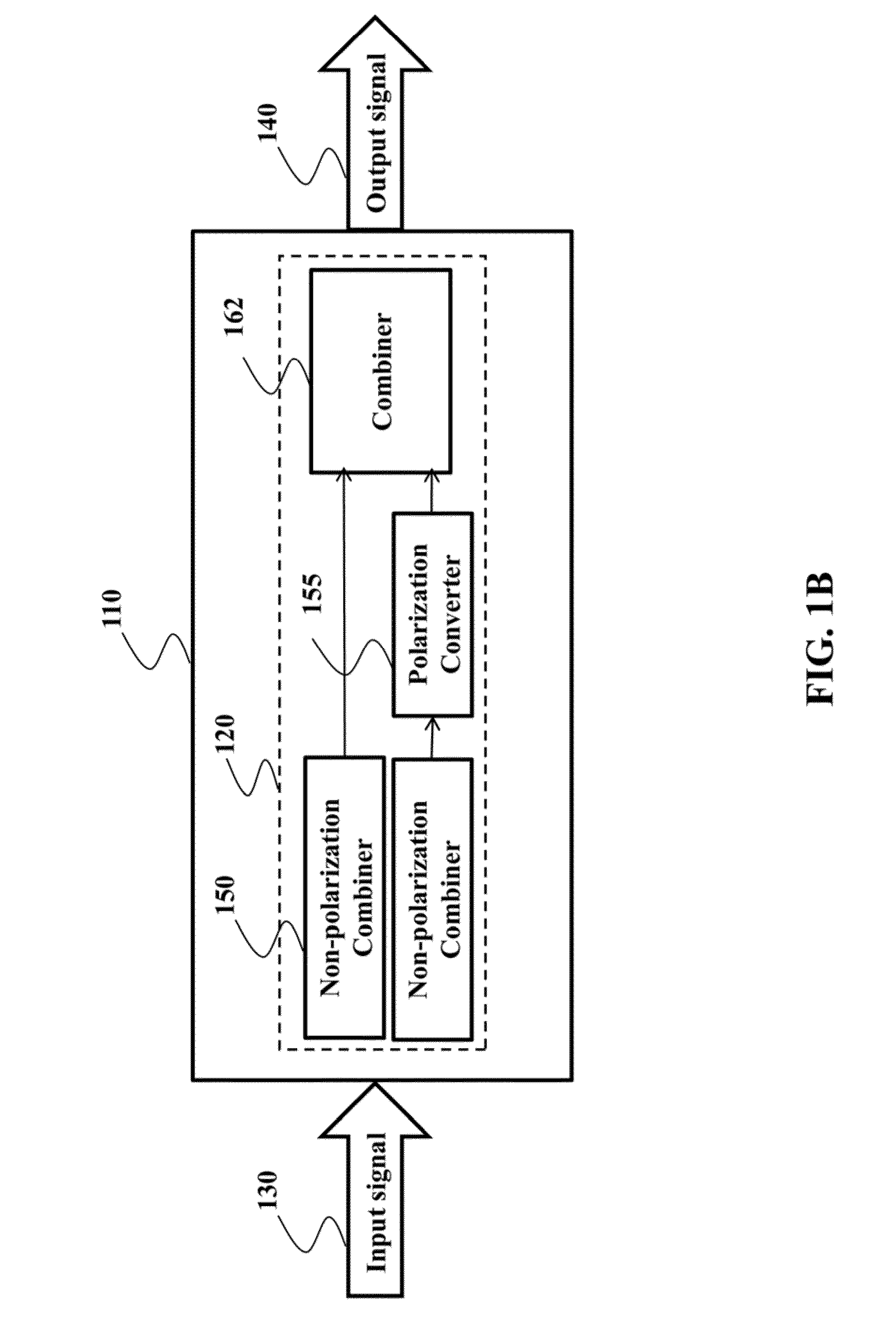Compound Optical Combiner
a combiner and optical technology, applied in the field of optical combiners, can solve the problems of large loss, small power loss, signal distortion, etc., and achieve the effects of minimizing insertion loss, large bandwidth, and simple fabrication
- Summary
- Abstract
- Description
- Claims
- Application Information
AI Technical Summary
Benefits of technology
Problems solved by technology
Method used
Image
Examples
Embodiment Construction
[0023]Some embodiments of die invention provide an optical combiner for multiple optical signals that minimizes insertion loss, and maximizes bandwidth. Some embodiments take advantage from the fact that, polarization multiplexing is typically not used when communicating data optically. In other words, each optical signal has a single polarization. Similarly, optical sources, e.g., lasers oscillate with the same polarization, e.g., in transverse electric (IF) modes. In addition, optical signals in a single mode fiber can be of any polarization. There is no requirement for relative polarizations among optical signals.
[0024]Such realizations and recognitions enable the design of a compound optical combiner using both polarization and non-polarization combiners. Advantageously, polarization combiner eliminates inherent loss when compared with power only combiners. In addition, polarization combiners reduce the requirement of wavelength characteristics and double wavelength separation a...
PUM
 Login to View More
Login to View More Abstract
Description
Claims
Application Information
 Login to View More
Login to View More - R&D
- Intellectual Property
- Life Sciences
- Materials
- Tech Scout
- Unparalleled Data Quality
- Higher Quality Content
- 60% Fewer Hallucinations
Browse by: Latest US Patents, China's latest patents, Technical Efficacy Thesaurus, Application Domain, Technology Topic, Popular Technical Reports.
© 2025 PatSnap. All rights reserved.Legal|Privacy policy|Modern Slavery Act Transparency Statement|Sitemap|About US| Contact US: help@patsnap.com



